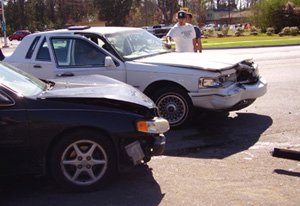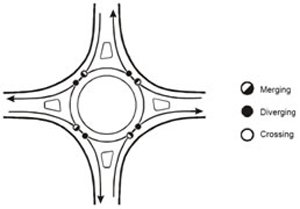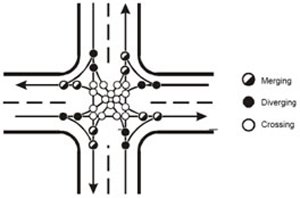ROUNDABOUT SAFETY
Traffic statistics consistently demonstrate that roundabouts are safer than typical four-way intersections. Collisions can be reduced by 50 to 90 percent when a typical intersection is converted to a roundabout. Here’s why:
Vehicles move slowly in one direction so they normally don’t crash head-on or at right angles which can occur at intersections with stop signs or traffic lights. When crashes do occur in a roundabout, they are generally slow-speed side-swipes with fewer, less serious injuries.
“Conflict points,” where a crash could occur, decrease from 32 at a four-way intersection to eight at a roundabout.
The number of potential vehicle/pedestrian conflict points (if pedestrians are allowed) decreases from 24 at a four-way intersection to eight at a roundabout.
Roundabouts are usually safer for pedestrians than typical intersections because pedestrians walk across the roundabout approaches (not across the center island), crossing one direction of traffic at a time. Compared to typical intersections, the crossing distance is fairly short, pedestrians can pause at the splitter island, and vehicle speeds are slower. However, not all roundabouts allow pedestrians.

Typical collision at four-way stop

Reduction of conflict points with roundabouts

32 conflict points at four-way intersections

